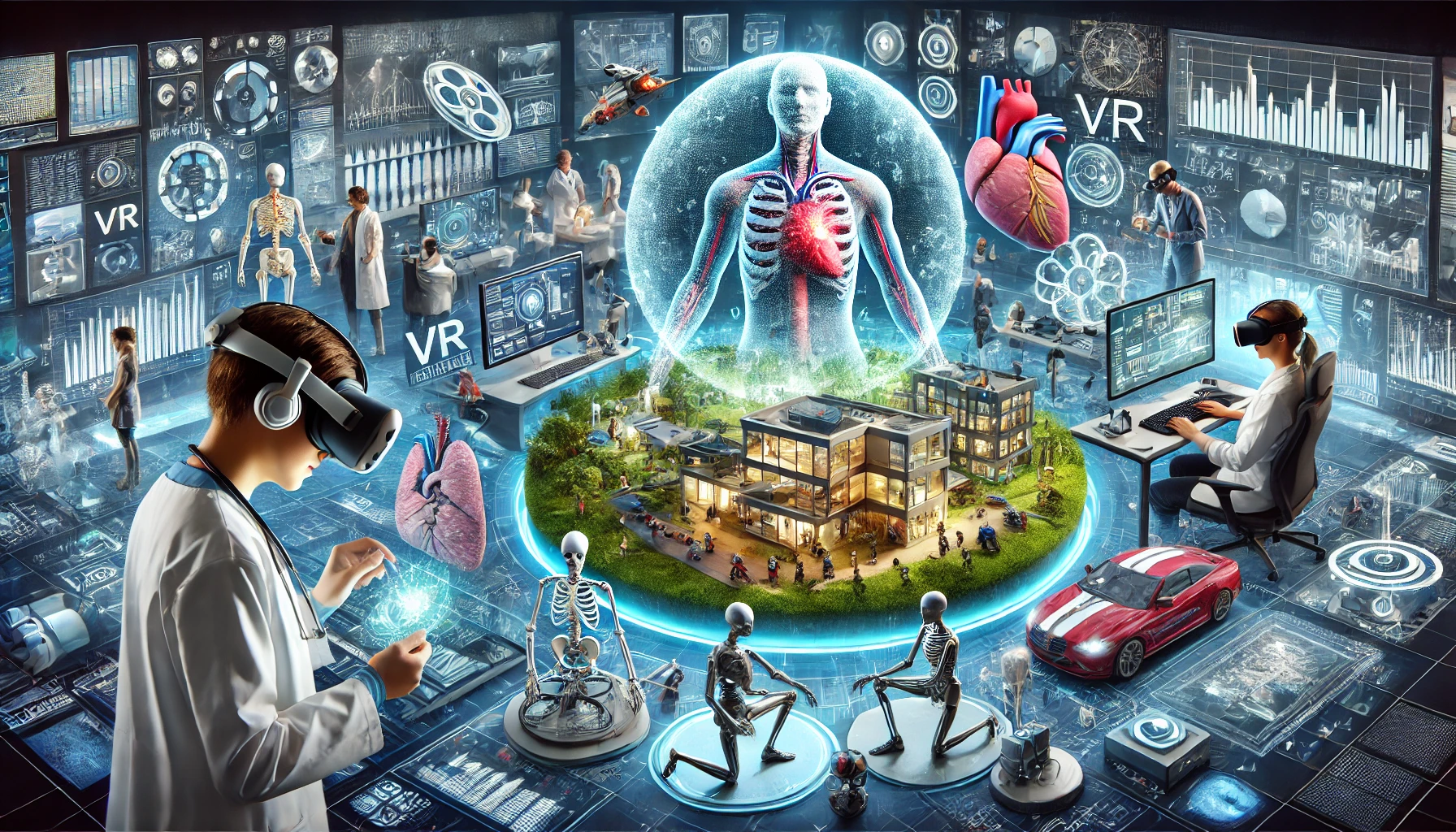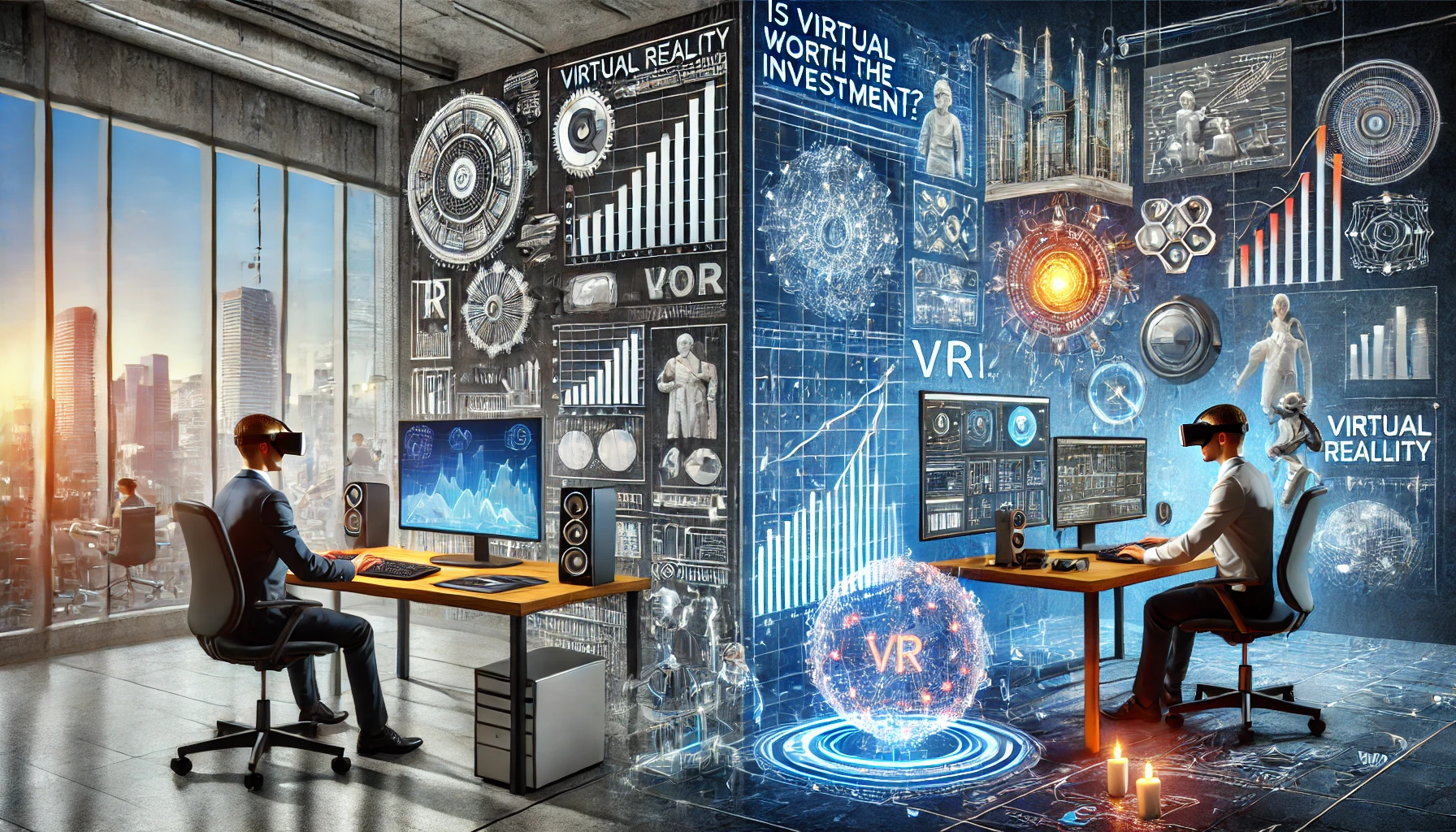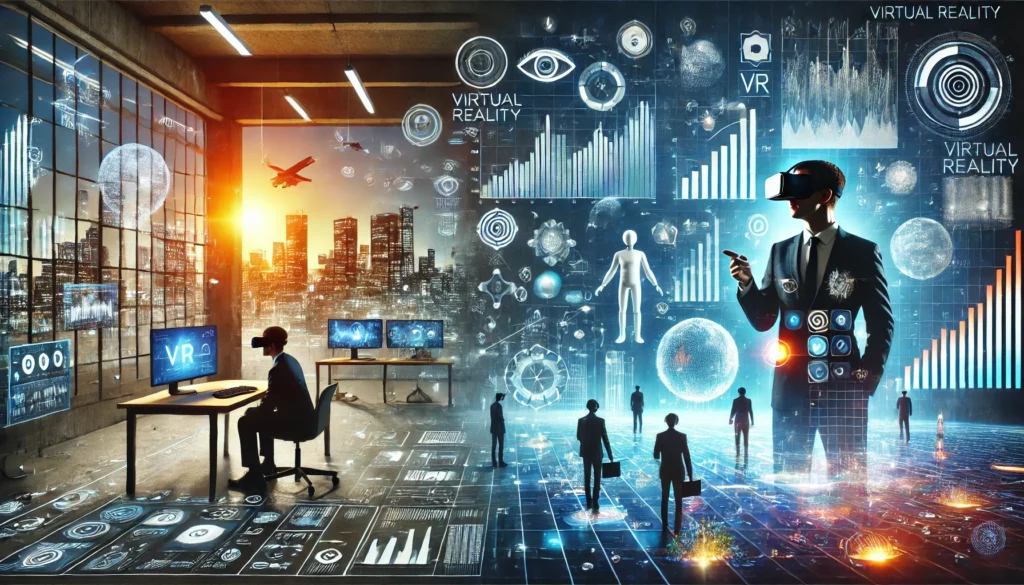Introduction
In a world dominated by technological advancements, Virtual Reality (VR) has emerged as one of the most intriguing innovations. From gaming and education to healthcare and remote work, VR is revolutionizing the way we interact with digital environments. But amidst the excitement, one question stands out: Is Virtual Reality worth it in today’s rapidly evolving digital landscape? This article explores VR’s potential, advantages, challenges, and future prospects to help you decide if it’s worth the investment.
Virtual Reality isn’t just about high-tech headsets and immersive games; it’s about creating entirely new dimensions of experience. Whether you’re a gamer, a medical professional, a business owner, or simply a tech enthusiast, VR offers something transformative for everyone.
Understanding Virtual Reality
What is Virtual Reality?
Virtual Reality (VR) is an immersive technology that uses computer-generated environments to simulate real-life or fictional experiences. Through VR headsets and motion-tracking devices, users can interact with these environments in real time. Unlike traditional screens, VR places users inside a three-dimensional world, making them active participants rather than passive observers.
Difference Between VR, AR, and MR
- Virtual Reality (VR): A fully immersive digital environment where users interact with a computer-generated world.
- Augmented Reality (AR): Digital elements are overlaid in the real world, often viewed through smartphones or AR glasses.
- Mixed Reality (MR): A hybrid environment where digital and real-world elements interact in real time.
The Evolution of VR
From early prototypes in the 1960s, such as the Sensorama, to today’s advanced VR systems like Oculus Rift, HTC Vive, and PlayStation VR, the technology has undergone immense transformation. Modern VR devices offer high-definition displays, advanced motion tracking, and enhanced audio systems, making virtual experiences more lifelike than ever. In 2024, VR continues to expand its reach, entering new industries and reshaping traditional practices.

Applications of Virtual Reality in Today’s World
Gaming and Entertainment
VR has revolutionized gaming by offering unparalleled immersion and interactivity. Popular platforms like PlayStation VR, Oculus Quest, and Valve Index have brought high-quality VR gaming experiences to homes. Players can step into fantastical worlds, interact with virtual characters, and feel like active participants in the storyline.
Limitations: Despite advancements, VR gaming can still suffer from motion sickness, requires expensive hardware, and depends on content availability.
Example: Games like Half-Life: Alyx and Beat Saber have set new standards for VR gaming.
Education and Training
VR allows students to explore virtual classrooms, historical landmarks, and scientific phenomena. It’s also used in corporate and medical training for hands-on simulations. With VR, learning becomes more engaging, interactive, and effective.
Example: Medical students use VR for virtual surgeries to improve precision and reduce risks.
Benefits:
- Hands-on experience without real-world risks.
- Accessibility to educational resources worldwide.
Healthcare and Therapy
VR helps in medical training, mental health therapy, and physical rehabilitation. For example, VR is used to treat PTSD, anxiety disorders, and phobias through controlled virtual environments.
Applications in Healthcare:
- Virtual surgical training.
- Exposure therapy for anxiety and phobias.
- VR-assisted physical rehabilitation.
Business and Remote Work
Businesses are leveraging VR for virtual meetings, collaborative projects, product design, and immersive training sessions. VR enables remote teams to feel present in a shared space, enhancing communication and productivity.
Challenge: Adoption remains limited due to high costs, lack of infrastructure, and resistance to change.
Example: Automotive companies use VR to design and prototype vehicles before physical manufacturing.
Tourism and Real Estate
VR-powered virtual tours allow travelers to preview destinations, museums, and landmarks before visiting. In real estate, buyers can explore properties remotely without traveling to the location.
Example: Real estate agencies use VR walkthroughs to showcase premium properties to global clients.
Advantages of Virtual Reality
- Immersive and interactive experiences: Users feel present in virtual worlds.
- Enhanced learning and skill development: Practical simulations improve retention and application.
- Cost-effective training solutions: Reduced need for physical resources and travel.
- Accessibility: Remote access to educational and medical resources.
- Improved collaboration: Virtual meetings feel more engaging and interactive.
Disadvantages and Challenges of Virtual Reality
- Cost: High initial investment in hardware and software.
- Content Limitation: Limited high-quality VR content.
- Health Concerns: Motion sickness, eye strain, and headaches.
- Privacy Risks: Security and data privacy challenges.
- Technological Limitations: Dependency on powerful hardware and stable internet connections.

Is Virtual Reality Worth the Investment?
The answer depends on your goals:
- For Consumers: VR is worth it for enthusiasts seeking immersive gaming and entertainment.
- For Businesses: Significant ROI in training, design, and collaboration.
- For Educators: Transformative teaching experiences.
- Cost-Benefit Analysis: While the initial cost is high, the long-term benefits in specific industries can justify the investment.
Future of Virtual Reality
- Advanced Hardware: Lightweight headsets and higher resolution displays.
- AI Integration: Smarter VR environments powered by AI.
- Wider Adoption: Industries like healthcare, defense, and education will rely more on VR.
- Affordability: Decreasing costs of VR devices and software.
- Content Growth: More immersive VR content across industries.
Conclusion
Virtual Reality is no longer a futuristic concept but a practical tool reshaping multiple industries. While challenges like cost and health concerns persist, the benefits in education, healthcare, business, and entertainment make VR a worthwhile investment for many. So, is Virtual Reality worth it in today’s digital world? The answer lies in how you plan to leverage its potential.
FAQs About Virtual Reality
1. Is VR technology still improving?
Yes, VR technology continues to improve with better graphics, reduced latency, and more affordable hardware.
2. Can VR be used effectively in small businesses?
Absolutely! Small businesses can use VR for training, virtual tours, and remote collaboration.
3. Is VR only for gaming?
No, VR is widely used in education, healthcare, real estate, and corporate training.
4. What are the most affordable VR headsets available today?
Oculus Quest 2 and PlayStation VR are popular affordable options.
5. Are there health risks associated with prolonged VR use?
Extended VR use can cause motion sickness, eye strain, and dizziness. Regular breaks are recommended.



